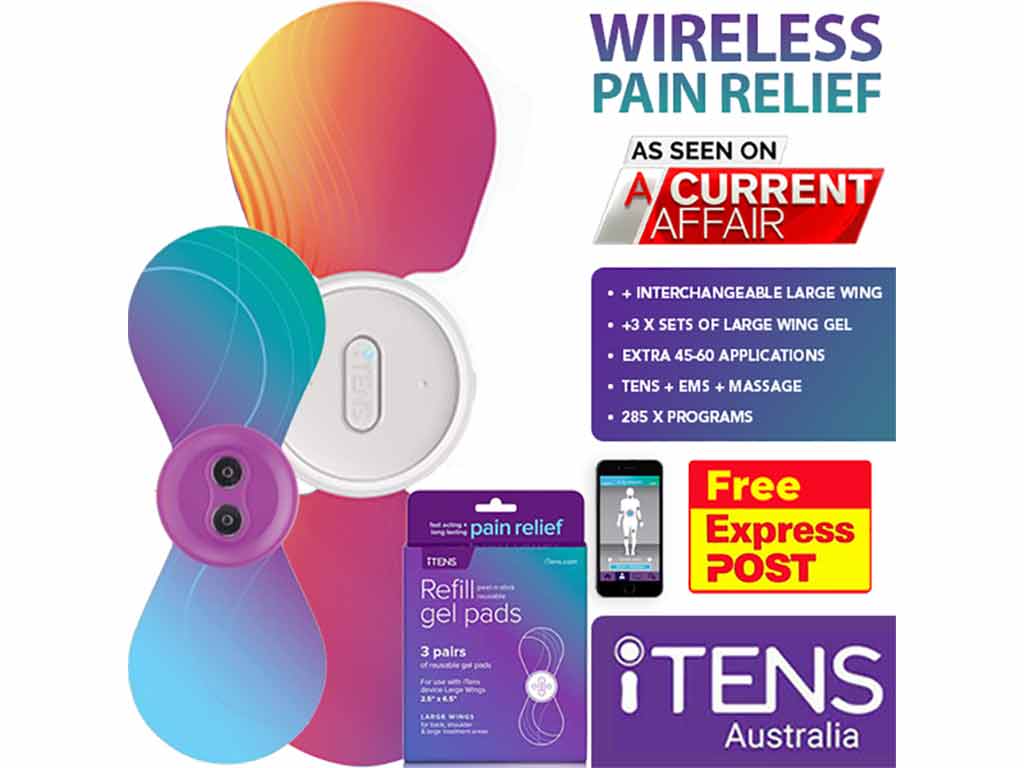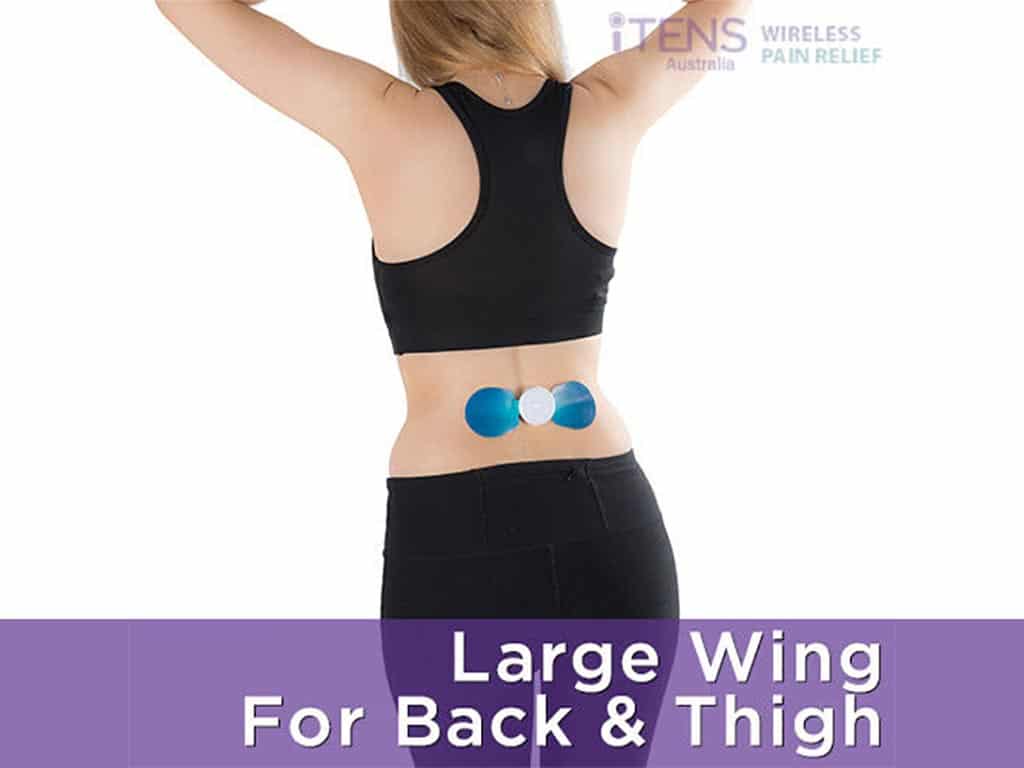
Dealing with menstrual pain every month can be an uncomfortable experience for many women. Fortunately, there is a Transcutaneous Electrical Nerve Stimulation or TENS device for period pain. It is an electrical device that uses electrical pulses as a method of pain relief. Accordingly, TENS therapy works in various ways to relieve painful periods. Foremost, it interrupts the transmission of pain signals. Also, TENS can trigger the release of endorphins. Additionally, it can enhance blood flow.
Period pain discomfort can be debilitating for women. It impacts daily lives and the overall quality of life. Traditional treatment for period pain may include heating pads, hot water bottles, and over-the-counter medications. However, they may not always provide adequate pain relief. As a result, individuals seek other treatment options. TENS therapy is one such promising solution. The following sections will present the TENS machine for period pain, how it works, and how to operate it.
What is a TENS Device for Period Pain?
Period cramps, medically termed dysmenorrhea, are painful conditions felt in the lower abdomen. It can occur before or during the menstrual cycle of a woman. These cramps are caused by the uterus contracting to help shed its lining. It is a natural part of the menstrual process. Accordingly, the discomfort can range from mild to severe pain. Fortunately, TENS can provide natural pain relief.
TENS device for period pain is a small, battery-operated device that delivers electrical currents to the nerve fibres. It can stream electrical impulses to the body via electrodes placed on the skin. Healthcare professionals and pain specialists often recommend TENS to patients. Additionally, people with period pain can utilise TENS units at home or on the go to alleviate discomfort.
The TENS machine comes in both wired and wireless variants. Wired TENS units are connected to electrodes via physical wires. Meanwhile, wireless TENS units are connected through Bluetooth or similar technology. Hence, it offers more freedom of movement. Regardless of the type, these devices provide numerous features. It may include adjustable settings and pre-set programs.
Causes of Menstrual Cramps
- Prostaglandins: These hormone-like substances can trigger the uterine muscles to contact. High levels of prostaglandins can prompt intense cramps.
- Endometriosis pain: It is a condition that occurs when tissue that usually lines the inside of the uterus grows outside of it.
- Uterine fibroids: These are non-cancerous growths on the uterine wall. It can lead to pressure and discomfort in the pelvic region.
- Adenomyosis: In this condition, the tissue that usually lines the uterus starts to grow into the muscular walls of the uterus.
- Cervical stenosis: In some women, the opening of the cervix may be so small that it impedes menstrual.

How a TENS Device for Period Pain Works to Alleviate Discomfort
The TENS device for period pain operates on the Theory of Pain Gate. It suggests that there is a “gate” in the central nervous system that controls the flow of pain signals to the brain. When the TENS unit sends electrical signals, it essentially “closes the gate”. Hence, it prevents pain messages from reaching the brain. As a result, TENS can reduce the sensation of menstrual pain.
Accordingly, the electric currents from TENS can lead to the production and release of endorphins. These are the natural painkillers produced by the body, similar to morphine. Endorphins bind to specific types of receptors in the brain and spinal cord. When endorphin levels increase, they can induce a sense of well-being. Thus, it offers period pain relief to individuals.
Moreover, the electrical impulses can improve blood flow in the treatment region. Enhanced blood circulation can help relax muscle tension. Therefore, it further eases menstrual cramps. Additionally, pulse therapy can stream currents in high and low frequencies. High-frequency TENS operates above 50 Hz. It is beneficial for acute conditions. Meanwhile, low-frequency operates below 10 Hz. It is valuable for chronic conditions.
Benefits of TENS Therapy
Foremost, TENS therapy provides natural pain relief. It does not require injections, incisions, surgical procedures or the intake of medications. Hence, it eliminates the potential side effects or long recovery periods. Secondly, TENS units offer customisation. Users can modify the frequency of stimulation, intensity level, and pulse duration.
Thirdly, the devices are usually portable. Thus, it allows for continuous pain relief while going about daily activities. Also, TENS units are reusable. It makes them a cost-effective long-term solution for managing menstrual discomfort. Additionally, TENS has a low risk of side effects. This makes it a safer choice for many individuals.

How to Operate a TENS Device for Period Pain
Operating a TENS device for period pain involves several straightforward steps. Begin by identifying the treatment region. Next, prepare the skin and position the electrode pads. Adhering to the proper pad placement is essential in this step. Then, connect the electrodes to the central machine using wires or on a smartphone via Bluetooth for wireless. Turn on the TENS unit accordingly.
The device usually has adjustable settings. Thus, modify the pulse rate, pulse amplitudes, and pulse duration. Additionally, some advanced models have pre-set programs. Hence, select or choose the program that directly targets menstrual cramps. Nevertheless, set the parameters at the lowest and gradually increase them to a comfortable level. Afterwards, initiate the pulse therapy.
Throughout the session, remain aware of the comfort level and make adjustments if necessary. The treatment duration varies depending on guidelines. Typically, the session lasts between 15 to 30 minutes. After completion of the session, turn off the TENS unit and carefully remove the electrode pads from the skin. Store the device and its accessories properly for future use.
Where to Place the Electrodes?
When using a TENS unit, proper electrode placement is essential for optimal relief. The placement is usually in the lower abdomen and lower back for period cramps. Accordingly, apply the electrodes below the belly button for lower abdominal cramps. Meanwhile, if the pain extends to the lower back, place the electrodes on the lower back region, avoiding the spine.
Additionally, ensure the pads are evenly spaced. Avoid placing the electrodes on sensitive areas of the body. Furthermore, users can start with the initial position and adjust the electrodes slightly to find the most effective placement.
Conclusion
Overall, endometriosis, adenomyosis, cervical stenosis, and prostaglandins are the common causes of menstrual cramps. Fortunately, the TENS device for period pain is a highly effective solution. It is a wired or wireless unit that professionals commonly recommend. Accordingly, it works by delivering electrical currents to the body. This can block pain signals, trigger endorphin release, and improve blood flow. Additionally, the electrical pulses can stream in high and low frequencies.
Pulse therapy provides numerous benefits. It is a natural pain relief, controllable or customisable, portable, reusable, and has a low risk of side effects. Furthermore, operating the device is a straightforward process. Begin by identifying the treatment area and preparing the skin. Then, place the electrode pads. Finally, turn on the device and modify the settings. However, knowing where to put the pads is crucial. The pads are usually placed in the lower abdomen or lower back for period cramps.




















